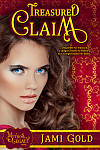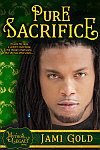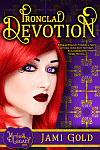Back when I started thinking of self-publishing, one of the first things I researched was cover artists. I’d decided that if I couldn’t find an artist who could create the kind of quality cover I wanted, I might have to come up with a different list of pros and cons for my “Should I self-publish?” list.
I’ve said since the beginning that my requirement for self-publishing was producing a book equal to those traditionally published. If I couldn’t meet that benchmark, self-publishing wouldn’t look nearly as appealing.
So in my usual over-thinking/over-analyzing way, I uber-researched the cover artist landscape. *smile* And I figured some of what I learned might be helpful to others.
Here are the six steps I went through during the cover art aspect of my publishing journey. Even if we traditionally publish, we should follow this list at least to Step #2. Traditionally published authors usually don’t have a say in their covers, but the better we understand trends, design elements, and what we like or don’t like, the better we’ll be able to fill out the “cover information sheet” many publishers use as a starting point for designing a cover.
Step #1: Keep Our Eyes Open
We should pay attention to self-publishing tips and recommendations unless we’re completely against self-publishing and know we will never go that route.
(Not as a hybrid author, publishing both under the self and the traditional banners. Not for novellas or short stories. Not as freebie side stories for a series. Nothing. Ever, ever, ever.)
If we can’t put ourselves into that category of never, we’re better off keeping our eyes open for self-publishing tips, options, and service providers.
Similar to Step One of how to find potential editors, our first step of finding a cover artist is to gather names or links of every artist we come across:
- friends who do cover art,
- recommendations from friends or social media,
- artists who have done covers we love,
- artists who win awards (such as Joel Friedlander’s monthly cover design awards),
- answers on forum posts about cover artists, etc.
I’d always kept the idea of self-publishing in the back of my mind as a possibility. Because of that, when I came across blog posts giving shout outs for various freelancers, I bookmarked that post and/or the freelancers they recommended and stuffed them in a “self-publishing” folder in my browser bookmark manager.
By the time I started my research, I already had over 50 cover artists bookmarked and several more posts with links to other artists. This gave me a huge head start in my research.
Step #2: Decide What We Like and Don’t Like
I’m not a designer. At all. So I was clueless about what I wanted for my cover.
In writing, we usually want to avoid clichés. However, our cover design needs to give a sense of our story’s genre.
In other words, cover design clichés are often necessary—and good—for attracting our target audience. Unfortunately for me, most of the cliché cover designs for my genre wouldn’t work for my covers, so I was a bit stuck for ideas.
(Tangent: The vast majority of paranormal romances feature a paranormal hero and a human heroine, so their covers highlight the hero with a bare torso shot and a hint of their paranormal nature, sometimes with a woman wrapped around him. Half of my Mythos Legacy stories involve a paranormal heroine and a human hero, so that cliché doesn’t work for my series.
Also, I write characters of different races and appearances, and as I’ve bemoaned before, it’s difficult to find diverse stock photos. So the stereotypical “clinch” cover of the hero and heroine in an embrace would be difficult to maintain over the whole series.
Other paranormal romance covers—those featuring shifters—include a photo of a wolf, bear, or whatever the character shifts into on the cover as well. Not all of my stories involve shifters, so that cliché wouldn’t work over the course of the series either.
I wouldn’t be surprised if my non-cliché covers hurt me in genre sales, but I still haven’t thought of a better way to approach this series. I break the stereotypes in many ways, and I guess I’m okay with that. *smile*)
To gather ideas, I scanned Amazon’s Top 100 Bestsellers for my genre and categories. A handful of covers didn’t follow the clichés as much and appealed to me. I started a secret Pinterest board to collect book covers I liked.
After collecting over 20 book cover images that I liked (and noting the things I liked about them), I was able to notice patterns. I had a fairly good idea of what elements appealed to me, and just as importantly, what elements, styles, or clichés I wanted to avoid.
This step doesn’t mean that we’re trying to do our designer’s job, or that we won’t listen to what they have to say (they are the expert). Rather, the purpose of this step is two-fold.
First, we want to know what style of cover art we’d like our designer to be good at so we can do a better job of narrowing down our list in the next step. Second, a stronger awareness of design elements can help us give our designer better feedback, such as being able to express why we like or dislike a rough design mockup.
Step #3: Review Artists to Get a “Feel” for Their Style
Once we have an idea of what we like or don’t, we can start narrowing down our big list of potential cover designers. I skimmed through the online portfolios of the artists in my saved list to get a feel for their experience, focus, skills, and style, as those are all potential reasons to eliminate them from our list.
They might…:
- Work in the Wrong Category: Some artists might have experience only in non-fiction covers, and we write fiction, or vice versa. The design trends for the two are very different.
- Not Have the Right Genre Experience: While some artists might specialize in our genre, others might not have any experience with those clichés or trends. An artist who’s skilled enough could research and come up with something great, but if we see that they only do one genre (a genre that’s not ours), we don’t have any evidence that they can branch out.
- Have the Wrong Style: Some artists work strictly with photos, and others might go for cartoony illustrations. Some design great text-focused covers, while others focus on the visuals. In this case, they might be a skilled cover artist but just have the wrong style for our book or genre.
- Lack the Necessary Skills: Some artists’ PhotoShop skills aren’t any better than mine (i.e., crap). Some design covers with blah font choices. Some create overstuffed, cluttered covers. Etc. We shouldn’t eliminate a cover artist just because some of their work falls into this category (for all we know, an author client requested those blah or cluttered covers), but we should take a closer look to see if their other covers show a different story.
Step #4: Make a Short List of 3-10 Artists
Once we’ve narrowed down our big list of potential cover artists, we want to start on our “short list.” These are the designers with the right skills and style for our project—that we trust would be able to come up with something that would work for us.
However, one reason we might have to eliminate an artist that we love is because they’re not available. Many cover artists are closed to new clients or don’t have an opening when we need one. For these, we might want to keep a “follow up later” list in addition to our short list.
Step #5: Prioritize and Contact
With our short list in hand, we can then start prioritizing who we’d want to work with. There are several factors that might go into that prioritized list:
- Price: For many of us, the artist we’d most like to work with might be beyond our budget. We might still keep them on our short list, however, because if all our other options fall through, we might work harder to figure out a way to afford them.
- Best at Style: Maybe there’s one artist where we love every one of their designs—not a clunker in the bunch. Or maybe they already have a pre-made cover we think might work if they can just tweak xyz.
- Timing: If we’re fighting with deadlines, we might prioritize based on the earliest available artist (or one with a workable pre-made cover).
Once we have that prioritized list, we can start making contact. If artist A doesn’t work out, we can move on to artist B, etc.
Step #6: Prepare for Issues
No matter how much we prepare, we’re likely to run into problems. An artist might have just filled their schedule. Or an artist we love might drop the ball or never return our emails. Or they might change their prices or design focus to no longer be a good fit.
Know that none of that has to be the end of the world. Things can go wrong, and we can still be okay.
When I started my research project, I wanted to have one cover artist for all my series books so they’d have a consistent design for branding. Anyone looking at my covers so far would probably assume that I have had only one cover artist.
However, I’ve actually had four in some shape or form. One’s schedule changed before she even started mockup, one went on sabbatical, one filled in for an emergency on a print cover, and one I’m working with now.
At some point in time, trends might change in my genre, or my designer and I might come up with another approach to working with my series. So our covers might not stay the same forever either. Again, not the end of the world.
The point is that my research helped me understand my options for artists and for designs. Once my designer #2 and I came up with the “template” for my series covers, the others were able to run with the design because I knew enough to be able to describe what I needed.
Often, when working with a designer, the hardest part is communication. What we see in our head, or what we like or don’t like, can be difficult to explain. Writers and cover artists almost speak a different language sometimes. So the more we’re in-tune with them on how their job and the design process works, the easier it is to come up with a design that will work for us. *smile*
Have you worked with a cover designer? What was the hardest part about finding the right artist? What was the hardest part about working through your project? What would you do differently next time? Do you have any tips or advice to share?
Last Week to Register!
Join Jami in her upcoming workshop:
Get ready for NaNo by learning how to do just enough story development to write faster with “Lost Your Pants? The Impatient Writers Guide to Plotting a Story.”





